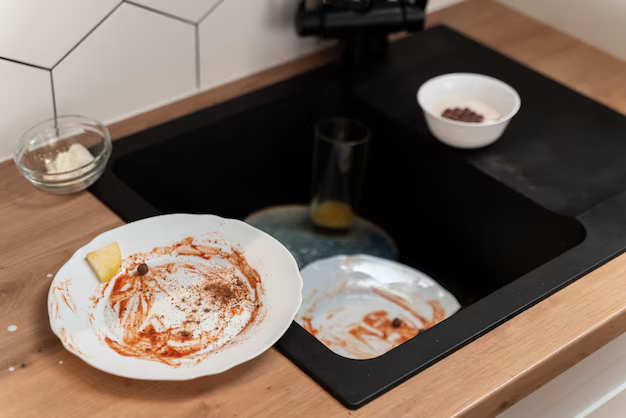Say Goodbye to Rust: Restoring Your White Refrigerator Door with Ease
Rust on your white refrigerator door is more than just an eyesore—it's a sign of deterioration that can compromise your appliance's longevity. Fortunately, removing rust and preventing its return can be accomplished with a few steps and some household items. 🛠️ This guide provides detailed instructions and essential tips for removing rust from your refrigerator door, while also offering insight into maintenance practices that keep your kitchen looking pristine.
Why Does Rust Appear on Refrigerator Doors?
Understanding the Cause
Rust is essentially iron oxide, a chemical compound that forms when iron combines with oxygen and moisture. While refrigerators are designed to resist rust, prolonged exposure to humidity or direct water contact, as well as chips or scratches on the paint, can eventually lead to rust formation. Regularly addressing such issues is crucial for maintaining your appliance's life.
Recognizing Early Signs
Identifying rust early can save you effort and prevent larger problems. Look out for small brown spots or bubbling paint on your refrigerator door. Such signs signal that rust is forming beneath the surface, and immediate action can prevent further damage.
Tools and Materials You'll Need
Before tackling rust removal, gather the following tools and materials to ensure a smooth and effective process. Having everything ready will make the job quicker and more efficient.
- Safety gear: Gloves and goggles to protect yourself from chemicals and debris.
- Cleaning solution: Vinegar, baking soda, or commercial rust remover.
- Scrubbing tool: Non-abrasive sponge or scrubbing pad.
- Sandpaper: Medium to fine grit.
- Paint: Appliance-compatible touch-up paint to match your refrigerator's color.
- Paintbrush: For touching up areas after rust removal.
- Rags: To wipe down surfaces before and after cleaning.
Step-by-Step Guide to Rust Removal
Preparation
Unplug and Clear: Begin by unplugging the refrigerator and moving it away from the wall to avoid electrical hazards. Clear the immediate area to prevent accidental damage or spills.
Clean the Surface: Use a mild soap and water solution to clean the affected area. This initial step helps remove any dust or grime and allows you to assess the extent of the rust damage.
Removing Rust
Option 1: Household Ingredients
Vinegar and Baking Soda Method:
- Pour vinegar over the rusty area and let it sit for about 5 minutes.
- Sprinkle baking soda onto a cloth and gently scrub the surface. The mild abrasion helps lift the rust without damaging the paint.
Lemon and Salt Mixture:
- Squeeze lemon juice on the rust, then sprinkle salt on top.
- Leave it for a few hours before scrubbing lightly with a sponge.
Option 2: Commercial Rust Removers
Use a Rust Remover: Follow the manufacturer's instructions precisely. Generally, this involves applying the remover, letting it sit for a specific amount of time, and then wiping it off with a damp cloth.
Safety First: Ensure you're working in a well-ventilated area and wearing proper safety gear to prevent irritation or injury from chemicals.
Post-Rust Removal
Sand the Area: Once the rust is removed, gently sand the area with fine-grit sandpaper until smooth. Ensure there’s no residue left by wiping down with a damp cloth afterward.
Touch-Up Painting: Use a paintbrush to apply appliance-compatible paint over the sanded areas. This step not only improves aesthetics but also seals the metal to prevent future rusting.
Final Checks
- Inspect Seams and Corners: Since these areas often trap moisture, ensure they are rust-free and properly sealed.
- Reassemble and Plug-In: Once the paint is dry to touch and your refrigerator is back in place, plug it in and resume normal use.
Preventative Maintenance Tips
Regular Cleaning
- Routine Wiping: Regularly wipe down your refrigerator with a mild soap solution. Focus on door seals and corners where rust often begins.
- Dry Immediately: Always dry the cleaned areas thoroughly to avoid moisture build-up.
Environmental Considerations
- Ventilation: Ensure your kitchen is well-ventilated to reduce humidity that fosters rust formation.
- Direct Exposure: Avoid placing the refrigerator where it’s exposed to direct sources of moisture or heat, such as sinks or stoves.
Protective Coating
- Wax and Sealant: Consider using a stainless-steel polish or a thin layer of car wax to create a protective barrier on the metal surface. This protective layer can repel moisture and delay rust.
Quick Summary 📝
Here’s a quick recap of practical steps to maintain your white refrigerator's pristine look:
- 🧽 Clean Regularly: Keep surfaces free from moisture and monitor frequently for any signs of rust.
- 🌿 Use Alternatives: Natural ingredients like vinegar, lemon, and baking soda can tackle initial rust issues.
- ⚒️ Restore Promptly: Handle rust spots immediately to prevent further corrosion.
- 🖌️ Repaint Carefully: Applying correct paint post-rust removal ensures protection and aesthetics.
- 🏠 Environmental Control: Maintain a low-humidity kitchen environment and avoid direct exposure to elements.
Seeing the Bigger Picture
Taking care of your refrigerator goes beyond addressing rust; it's about ensuring your kitchen’s efficiency and hygiene. Implementing regular maintenance routines can significantly extend the lifespan of your appliances, saving you time and future repair costs.
Persistent rust issues, however, could indicate a defect or deeper problem requiring expert evaluation. Always remain vigilant and proactive in maintaining your appliances, and never hesitate to consult professional services when necessary to preserve the harmony and functionality in your home.
